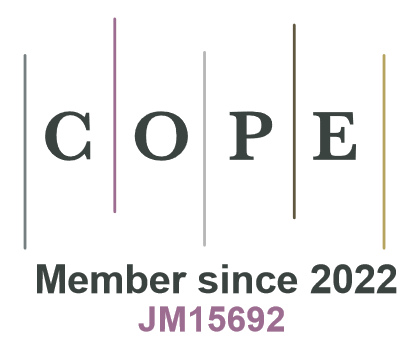Zmiany hipokampalnego rytmu theta po inaktywacji brzusznego pola nakrywkowego (VTA) u szczura w narkozie uretanowej
DOI:
https://doi.org/10.18778/1730-2366.03.12Abstract
Brzuszne pole nakrywkowe śródmózgowia (VTA), kluczowa struktura układu mezolimbicznego jest anatomicznie powiązana z formacją hipokampa. Stwierdzono również zaangażowanie tej okolicy w regulację korowej i hipokampalnej aktywności EEG u czuwających szczurów podczas takich zachowań (np. eksploracyjne węszenie), które są z łatwością wywoływane przez stym ulację VTA i zwykle towarzyszy im rytm theta. Obecne doświadczenia miały na celu poznanie przypuszczalnej roli VTA w kontroli tego rytmu. Materiał i metody. Doświadczenia przeprowadzono na uretanizowanych szczurach, u których rytm theta wywoływano poprzez ucisk nasady ogona. Badano efekty jednostronnej lezji elektrolitycznej (1 mA, 10 s) lub mikroiniekcji prokainy (20% roztwór/0,5 ц1) do VTA. Analizowano 60-sekundowe zapisy wykonane przed i podczas stymulowanego sensorycznie rytmu theta. Określano maksimum mocy i odpowiadającą mu częstotliwość osobno dla pasm o częstotliwości theta (3-6, 6-9 i 9-12 Hz) i dla pasma delta (1-3 Hz). Wyniki. Jednostronna, czasowa inaktywacja VTA po mikroiniekcji prokainy spowodowała dwustronny zanik hipokampalnego rytmu theta, co przejawiało się osłabieniem synchronicznej czynności hipokampalnego EEG i odpowiednią redukcją mocy w paśmie 3-6 Hz. Trwałe uszkodzenie VTA poprzez jednostronną lezję elektrolityczną wywołało długotrwałe, głównie ipsilateralne zmniejszenie mocy rytmu theta, z pewnymi zmianami jego częstotliwości w paśmie 6-9 Hz. Jednocześnie wystąpił wzrost mocy w wyższych pasmach częstotliwościowych, co wskazuje na zmniejszenie synchroniczności hipokampalnej aktywności EEG. Wnioski. VTA należy do systemu struktur pnia mózgu włączonych w synchronizację aktywności polowej hipokampa.Downloads
References
Bland В .H., Konopacki J., Kirk I.J., Oddie S.D., Dickson C.T. (1995) Discharge patterns of hippocampal theta-related cells in the caudal diencephalon of the urethane anesthetized rat. J. Neurophysiol. 74: 322-333.
Google Scholar
DOI: https://doi.org/10.1152/jn.1995.74.1.322
Bland B.H., Oddie S.D. (1998) Anatomical, electrophysiological and pharmacological studies of ascending brainstem hippocampal synchronizing pathways. Neurosci. Biobeh. Rev. 22: 259-273.
Google Scholar
DOI: https://doi.org/10.1016/S0149-7634(97)00013-4
Jurkowlaniec E., Tokarski J., Trojniar W. (2003) Effect of unilateral ibotenatelesions o f the ventral tegmental area on cortical and hippocampal EEG in freely behaving rats. Acta Neurobiol. Exp. 63: 369-375.
Google Scholar
Jurkowlaniec E, Trojniar W., Ozorowska T., Tokarski J. (1989) Differential effect o f the dam age to the lateral hypothalamic area on hippocampal theta rhythm during waking and paradoxical sleep. Acta Neurobiol. Exp. 49: 153-169.
Google Scholar
Kirk I.J., McNaughton N. (1993) Mapping the differential effects of procaine on frequency and amplitude of reticularly elicited hippocampal rhythmical slow activity. Hippocampus 3: 517-526.
Google Scholar
DOI: https://doi.org/10.1002/hipo.450030411
Kirk I.J., Oddie S.D., Konopacki J., Bland B.H. (1996) Evidence for differential control of posterior hypothalamic, supramammillary, and medial mammillary theta-relatcd cellular discharge by ascending and descending pathways../. Neurosci. 16: 5547-5554.
Google Scholar
DOI: https://doi.org/10.1523/JNEUROSCI.16-17-05547.1996
Kocsis B., Vertes R.P. (1994) Characterization of neurons in the supramammillary nucleus and mammillary body that discharge rhythmically with the hippocampal theta rhythm in the rat. J. Neurosci. 14: 7040-7052.
Google Scholar
DOI: https://doi.org/10.1523/JNEUROSCI.14-11-07040.1994
Kram is R., Vanderwolf C .H., Bland B.H. (1975) Two types of hippocampal rhythmical slow activity in both the rabbit and the rat: relations to behavior and effects o f atropine, diethyl ether, urethane and pentobarbital. Exp. Neurol. 49: 58-85.
Google Scholar
DOI: https://doi.org/10.1016/0014-4886(75)90195-8
McNaughton N „ Logan B., Panickar K.S., Kirk I.J., Pan W .X., Brown N.T., Heenan A. (1995) Contribution o f synapses in the medial supramammillary nucleus to the frequency of hippocampal theta rhythm in freely moving rats. Hippocampus 5: 534-545.
Google Scholar
DOI: https://doi.org/10.1002/hipo.450050605
Nowacka A., Jurkowlaniec E., Trojniar W. Microinjection of procaine into the pedunculopontine tegmental nucleus suppresses hippocampal theta rhythm in urethane-anesthetized rats. Brain Res. Bull. 58: 377-384.
Google Scholar
DOI: https://doi.org/10.1016/S0361-9230(02)00801-8
Nunez A., de Andreas I., Garcia-Austl E. (1991) Relationship of nucleus reticularis pontisoralis neuronal discharge with sensory and carbachol evoked hippocampal theta rhythm . Exp. Drain Res. 87: 303-308.
Google Scholar
DOI: https://doi.org/10.1007/BF00231847
Oades R.D., Halliday G.M. (1987) Ventral tegmental (A10) system: ncurobiology. 1. Anatomy and connectivity. Brain Res. 434: 117-65.
Google Scholar
DOI: https://doi.org/10.1016/0165-0173(87)90011-7
Pan W .X., McNaughton N. (2002) The role o f the medial supramammillary nucleus in the control of hippocampal theta activity and behaviour in rats. Eur. J. Neurosci. 16: 1797-1809.
Google Scholar
DOI: https://doi.org/10.1046/j.1460-9568.2002.02267.x
Paxinos G., Watson C. (wyd.) (1986) The rat brain in stereotaxic coordinates, 2th edition. Academic Press, San Diego.
Google Scholar
Sano K., Iwahara S., Semba S., Sano A., Yamazaki S. (1973) Eye movements and hippocampal theta activity in rats. Electroenceph. Clin. Neurophysiol. 35: 621-625.
Google Scholar
DOI: https://doi.org/10.1016/0013-4694(73)90215-0
Vanderw olf C.H. (1969) Hippocampal electrical activity and voluntary movements in the rat. Electroenceph. Clin. Neurophysiol. 26: 407-415.
Google Scholar
DOI: https://doi.org/10.1016/0013-4694(69)90092-3
Vertes R .P., Kocsis B. (1997) Brainstem-diencephalo-septohippocampal systems controlling the theta rhythm of the hippocampus. Neuroscience 81: 893-926.
Google Scholar
DOI: https://doi.org/10.1016/S0306-4522(97)00239-X
Vertes R. P., Colom L.V., Fortin W.J., Bland B.H. (1993) Brain stem sites for carbachol elicitation of the hippocampal theta rhythm in the rat, Exp. B rain Res. 96. 419-429.
Google Scholar
DOI: https://doi.org/10.1007/BF00234110
W oodnorth M.A., Kyd R.J., Logan B.J., Long M.A., McNaughton N. (2003) Multiple hypothalamic sites control the frequency o f hippocampal theta rhythm . Hippocam pus 13: 361-374.
Google Scholar
DOI: https://doi.org/10.1002/hipo.10111
Downloads
Published
How to Cite
Issue
Section
License

This work is licensed under a Creative Commons Attribution-NonCommercial-NoDerivatives 4.0 International License.
Funding data
-
Ministerstwo Edukacji i Nauki
Grant numbers 885/P-DUN/2014








